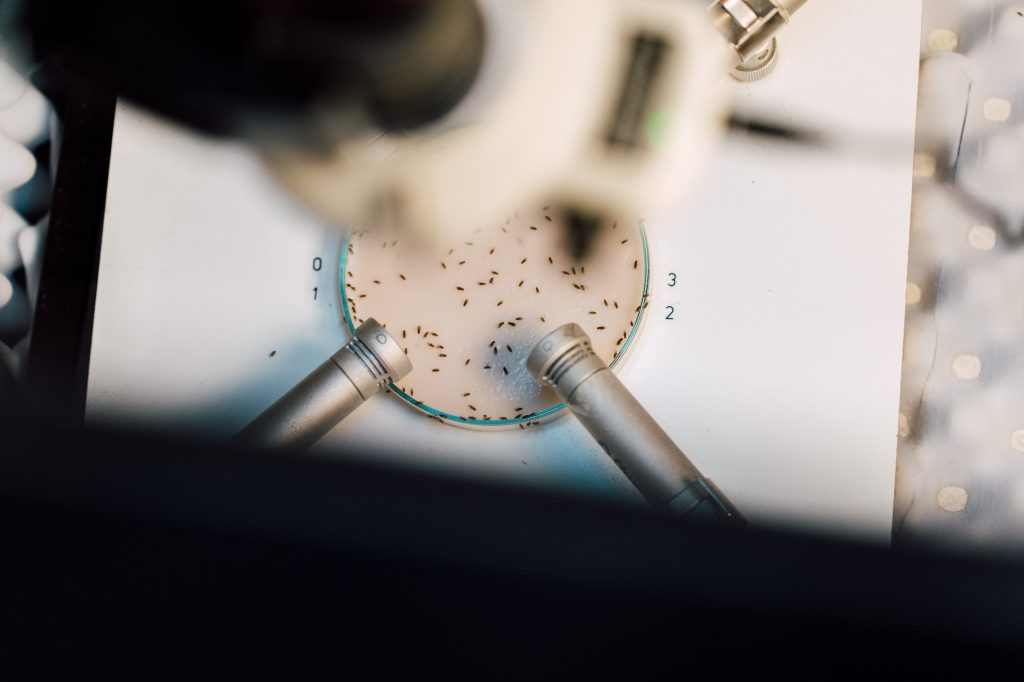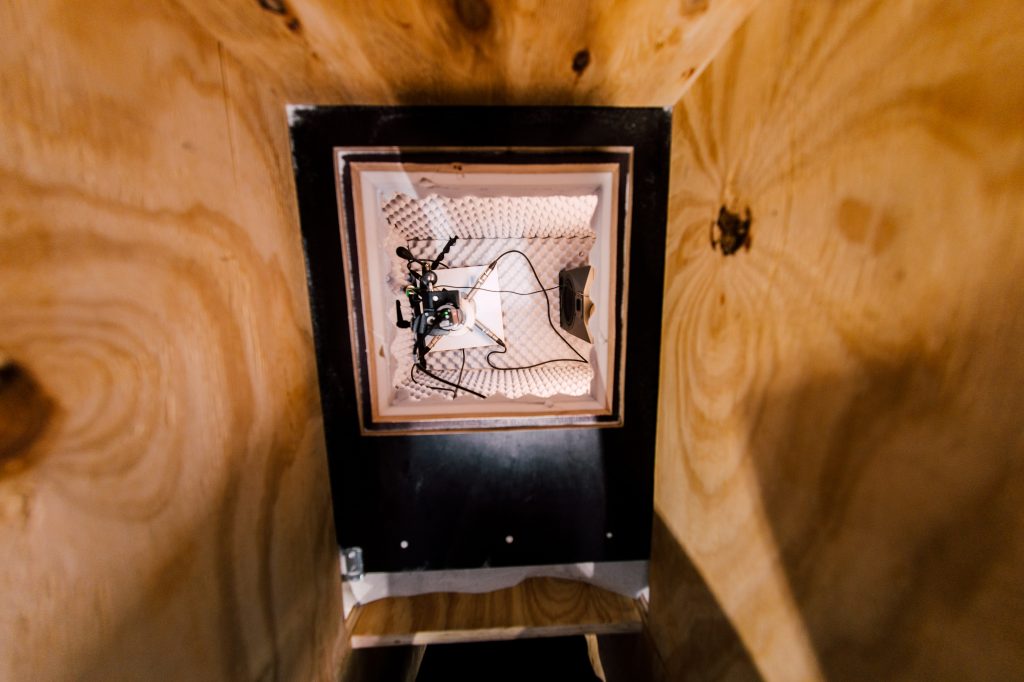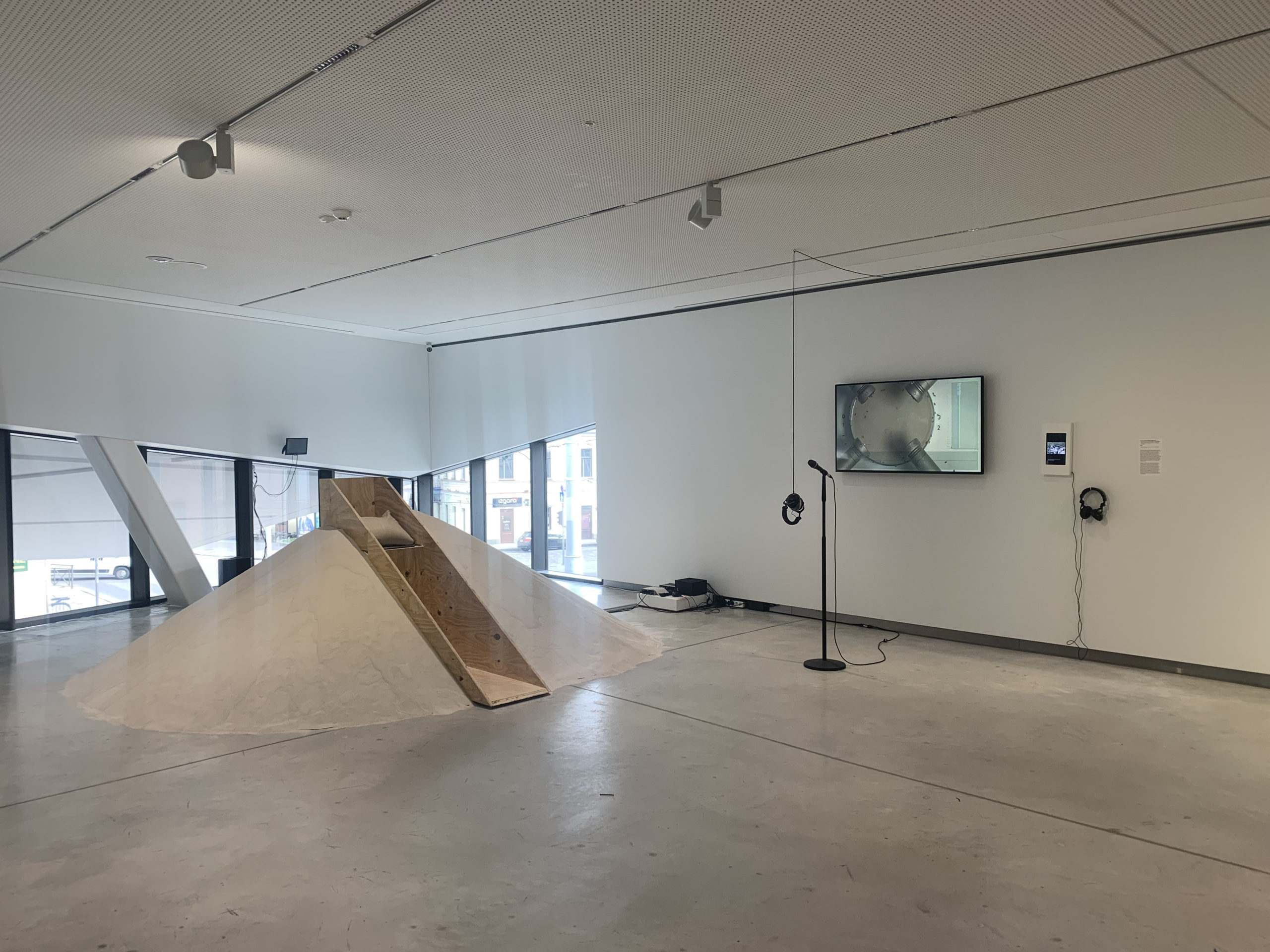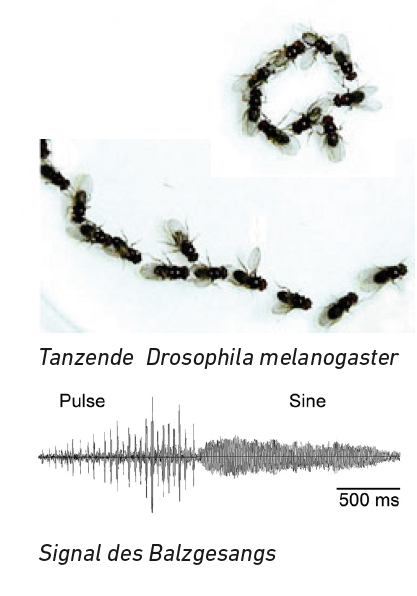Time of the Flies
22.07.2022
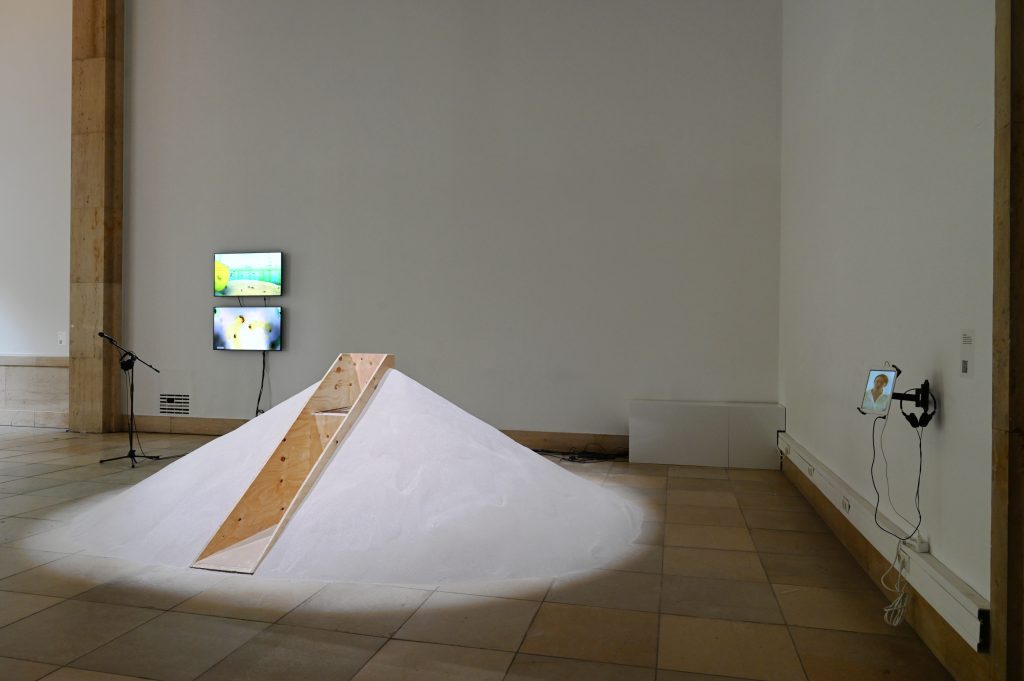
Time of the flies is a further development of Drosophila Karaoke Bar.
It was first shown at the Science Gallery Melbourne as a part of the SWARM exhibition.
During the time of the pandemic I was experiencing our biological condition in a new way: Pandemics are teaching us about spheres, proximities, our distance behavior. We are asking ourselves, if we have been paying enough attention to the safety of our sphere of life so far and who we let come close. I called this period „time of flies“, mainly as I was living in my one room apartment in Berlin alone with fruitflies – cultures of fruit flies in my home.
As soon as you work with a biological organism (animals or cells), something very fundamental is changing: your day is determined by the needs of your culture, the critters you let into your habitat are dominating your daily routines. You have to assure that they are comfortable, reproduce, even if the preferred living condition would be different.
To make flies my housemates was an idea that came to me because i was looking for a living being to serve as an object of observation. It should exhibit interesting collective behavior, and have a significance in science and our civilized way of life.
That’s how I ended up with flies. Neuroscientists have chosen flies because their brains are more simple than ours. If one looks at the behavior of the flies, one can perceive that their activities e.g. during their ‘party hour’ are already very complex.
One sees flying fruit flies, sitting, chasing and sniffing each other, visiting friends, courting flies, mating flies, fighting flies (as reported by Ralph Greenspan[1]).
Fruit flies sing. Beyond the well-known buzzing during their flight, they are also singing with their wings to communicate with each other. Of these songs, sinus tone and pulse tone are known, the latter of those being semantically encoded But I noticed sonic patterns, besides the scientifically described pulse song by Birgit Brüggemeier[2] and sine song like the buzzing of flying flies, but also other patterns that sound rather aggressive or like strange signals to make themselves heard.
To engage in an exchange with the flies, I draw on these behavioral patterns. With this work I offer you a possibility to talk directly to fruit flies through singing. When we humans sing, our songs often develop along already known melodies. But here, we don’t know which song to sing. We first have to listen.
To facilitate the contact, we have used a software with which we adapt the sound of human song to the song of flies. The software is based on audio mosaicing provided by the Fraunhofer Institut IIS[3]. Audio mosaicing is more advanced than the vocoder software we used for Drosophila Karaoke Bar. A vocoder adapts only the envelope, i.e. the characteristic curve of the amplitude of a sound that shapes the timbre, to a target sound. Audio mosaicing also adapts the frequency spectrum in its activation patterns to a pre-selected template.
How has the audio mosaicing changed the interaction with the flies? While with the vocoder I still had the feeling of speaking through an instrument, the audio mosaicing immediately induced me to sing with the usual pitches and timbres of fly song. This fundamentally changed the experience with the flies. The vocoder allowed to immediately stimulate the flies. Very soon it was apparent that this tool is good to arouse the flies. After an initial enthusiasm to be accepted into the world of flies, however, the question quickly arose: what happens next? Finally, you can only disappoint the flies as soon as they realize that you are not a suitable partner. And here’s where audio mosaicing became interesting. It allowed me to enter a sound sphere that was that of the flies.
Impressions from the opening
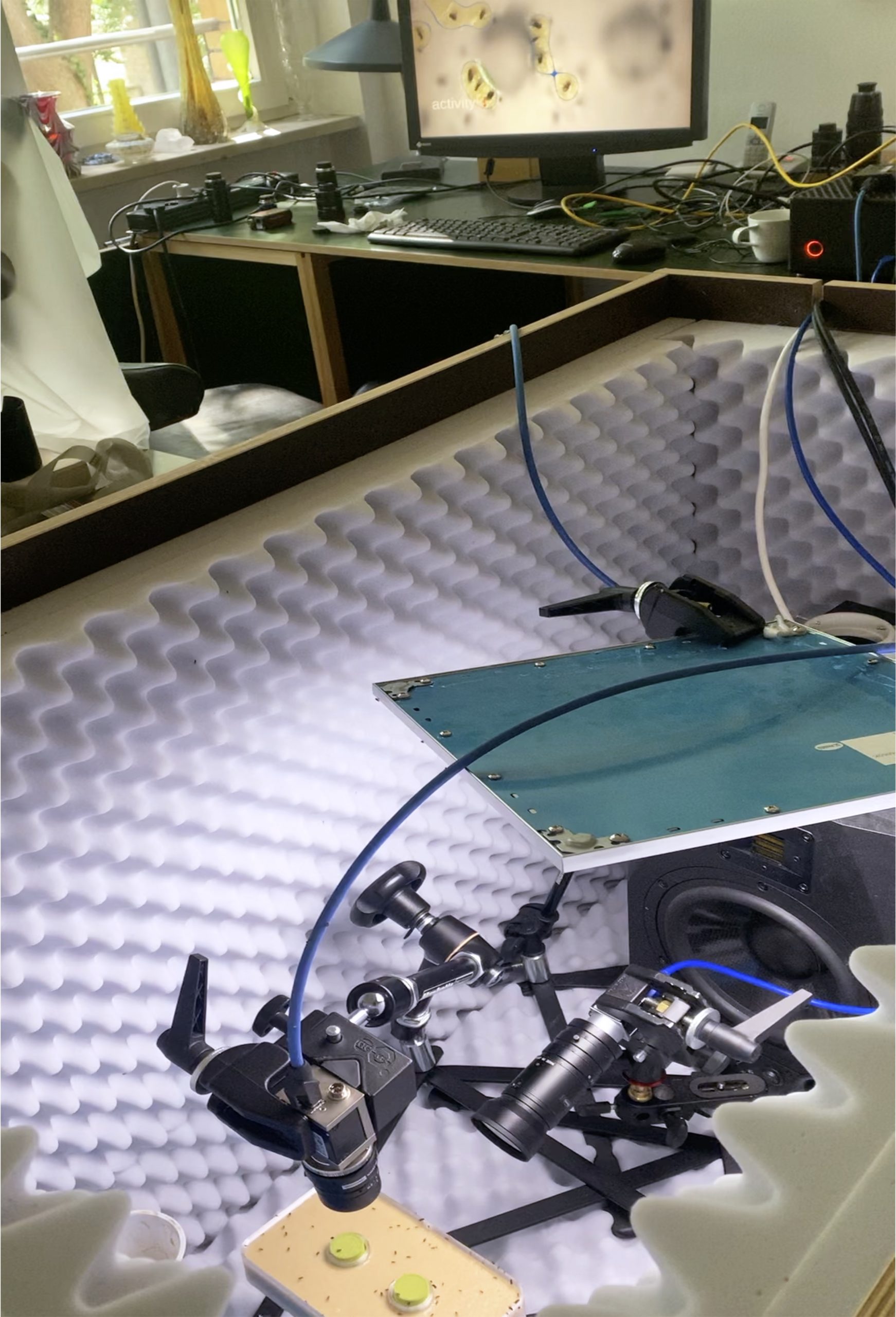
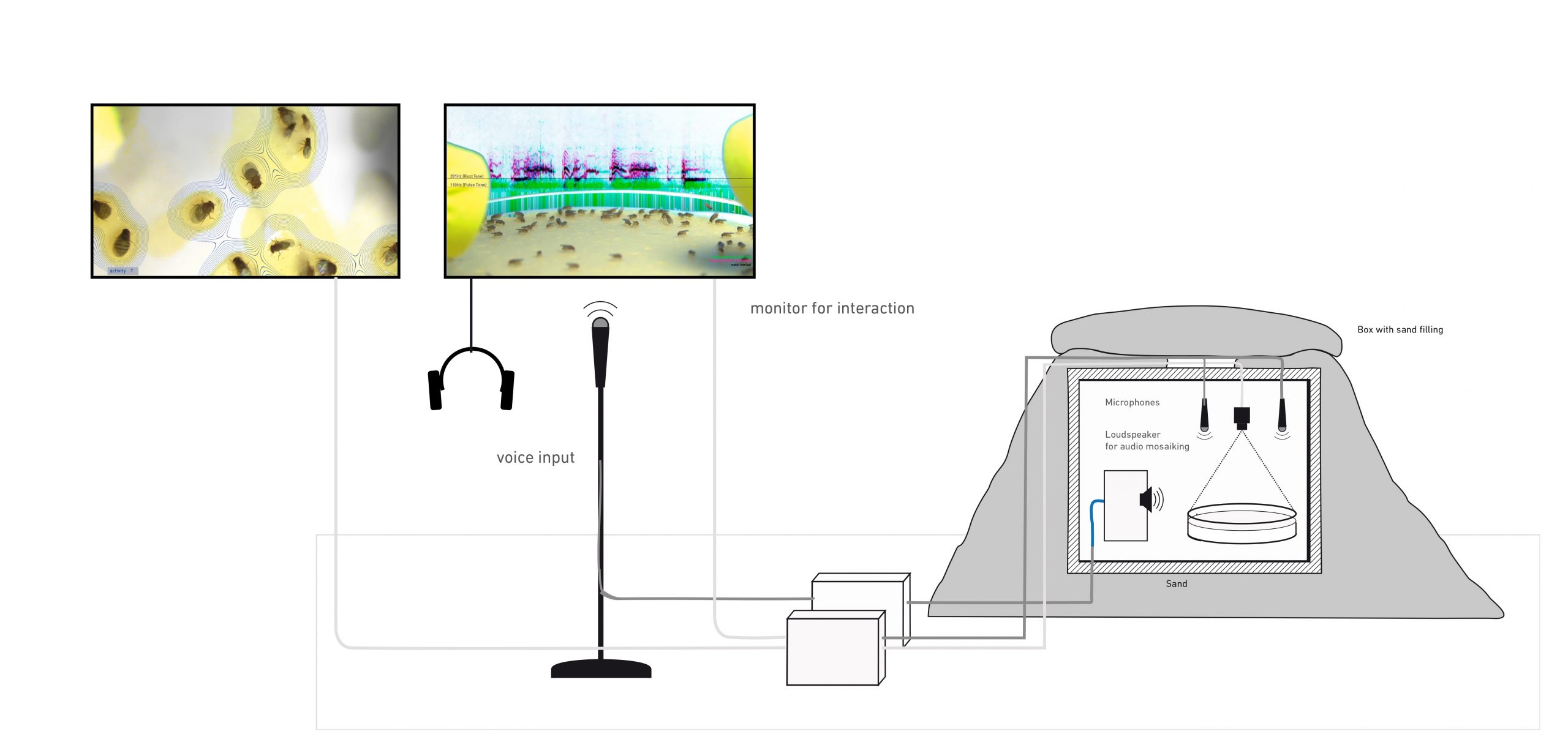
I have often and repeatedly tried to develop an understanding of the flies by singing with the audio mosaicing. I had to understand that the flies are lazy and quirky. If they don’t want something, they simply don’t care. When they are having fun, they don’t bother with us humans. They don’t need us – except maybe our food. But that was it. When I was in the sound spectrum of the fly, I got into complaining, moaning, groaning, and every utterance was physical, immediate, not very sophisticated.
I ofteh wished that my voice was trained, that of a singer. And I could demand more artistry from it. But – and this seems to me the bottom line – in these times the obvious is the essential.
But what does all this work mean now: sharing one’s habitat with a so-called nuisance? And to sing laments or songs of suffering, of perseverance, of waiting, with this nuisance? Sartre (“Les mouches”) would give an unambiguous answer: Overcome the guilt. Step out of the shadows of the past…
I, however, wanted just to create an open situation, in which we observe and interact without bias before ‘knowing’ or making decisions about an opponent. And any artfulness would be out of place.
And I focused on fruit flies because they are part of that what we eliminate from daily life, what we eradicate with pest control, what does not belong to a culture of modernity. The confrontation with our own shortcomings seems to me essential for overcoming it.
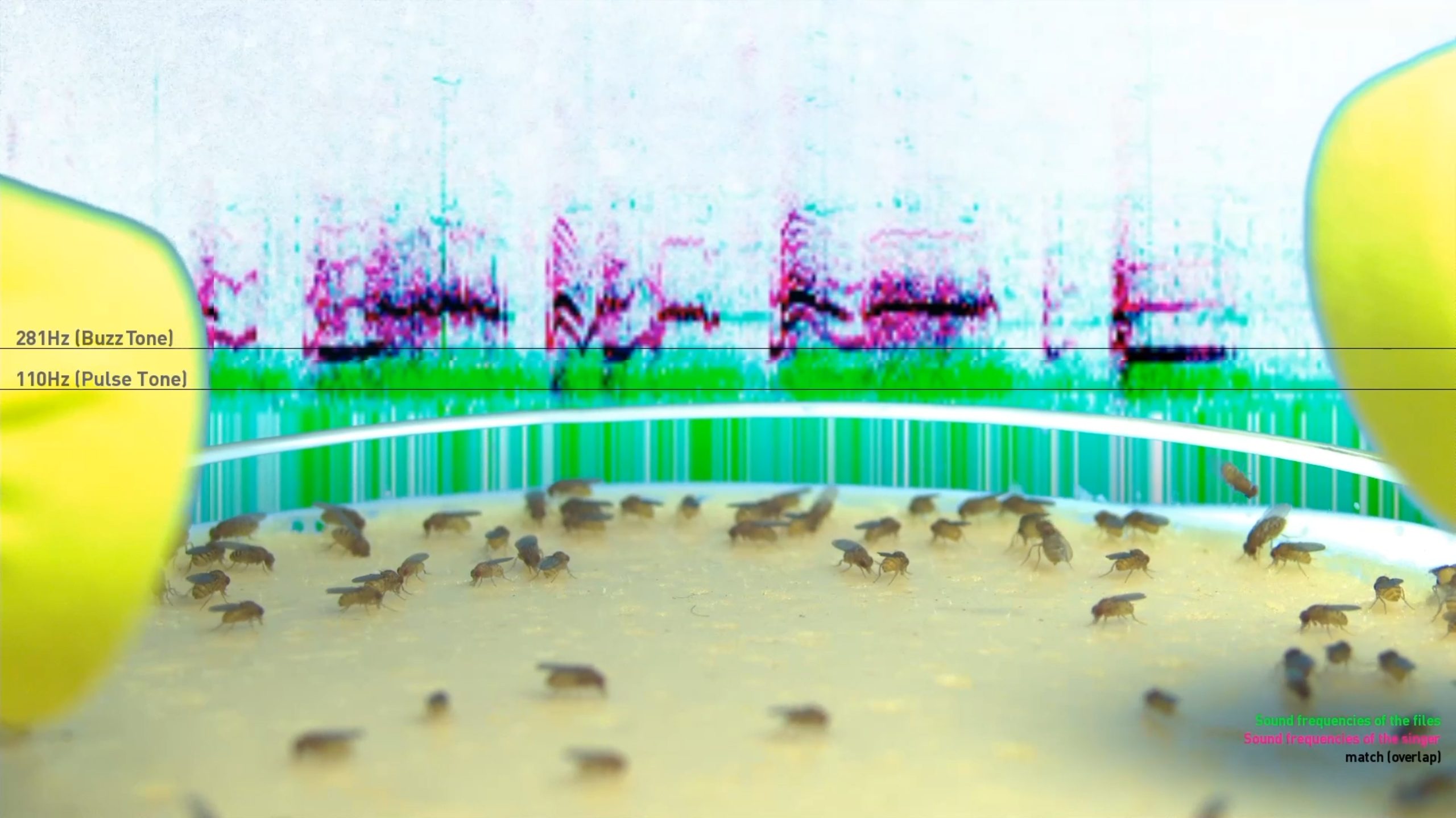
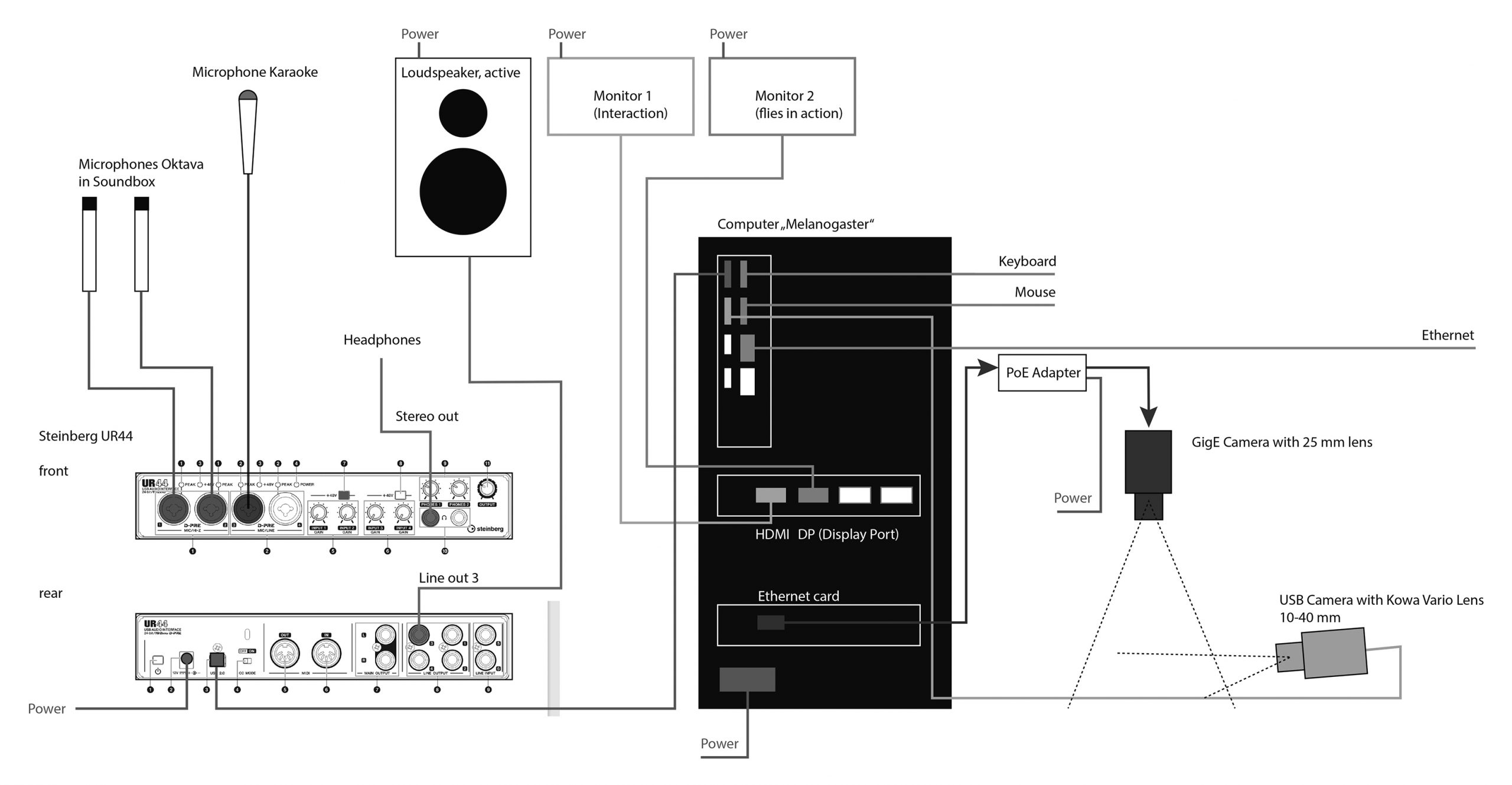
The work has been produced with the support of a grant from the Fraunhofer Artists in Lab Program.
But it would not have been possible without the technological design, programming, support and endurance of Felix Bonowski.
[1] Hans Dierick, Ralph Greenspan; Molecular analysis of flies selected for aggressive behavior. Nat Genet. 2006 Sep;38(9):1023-31 https://doi.org/10.1038/ng1864
[2] Birgit Brüggemeier, Mason A. Porter, Jim O. Vigoreaux, Stephen F. Goodwin; Female Drosophila melanogaster respond to song-amplitude modulations. Biol Open 15 June 2018; 7 (6): bio032003. doi: https://doi.org/10.1242/bio.032003
[3] Patricio López-Serrano, Christian Dittmar, Yiğitcan Özer, and Meinard Müller
NMF Toolbox: Music Processing Applications of Nonnegative Matrix Factorization
In Proceedings of the International Conference on Digital Audio Effects (DAFx), 2019.

